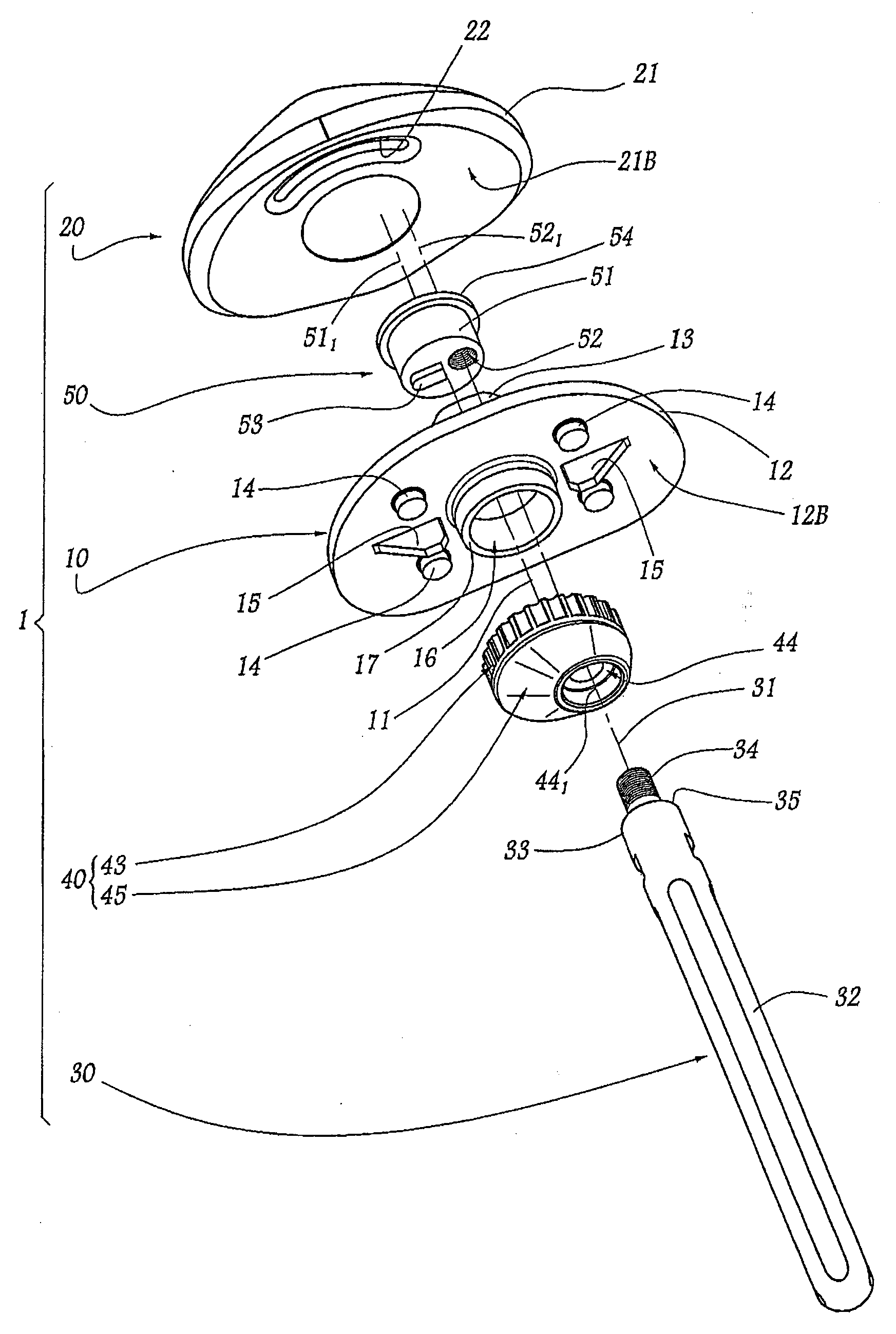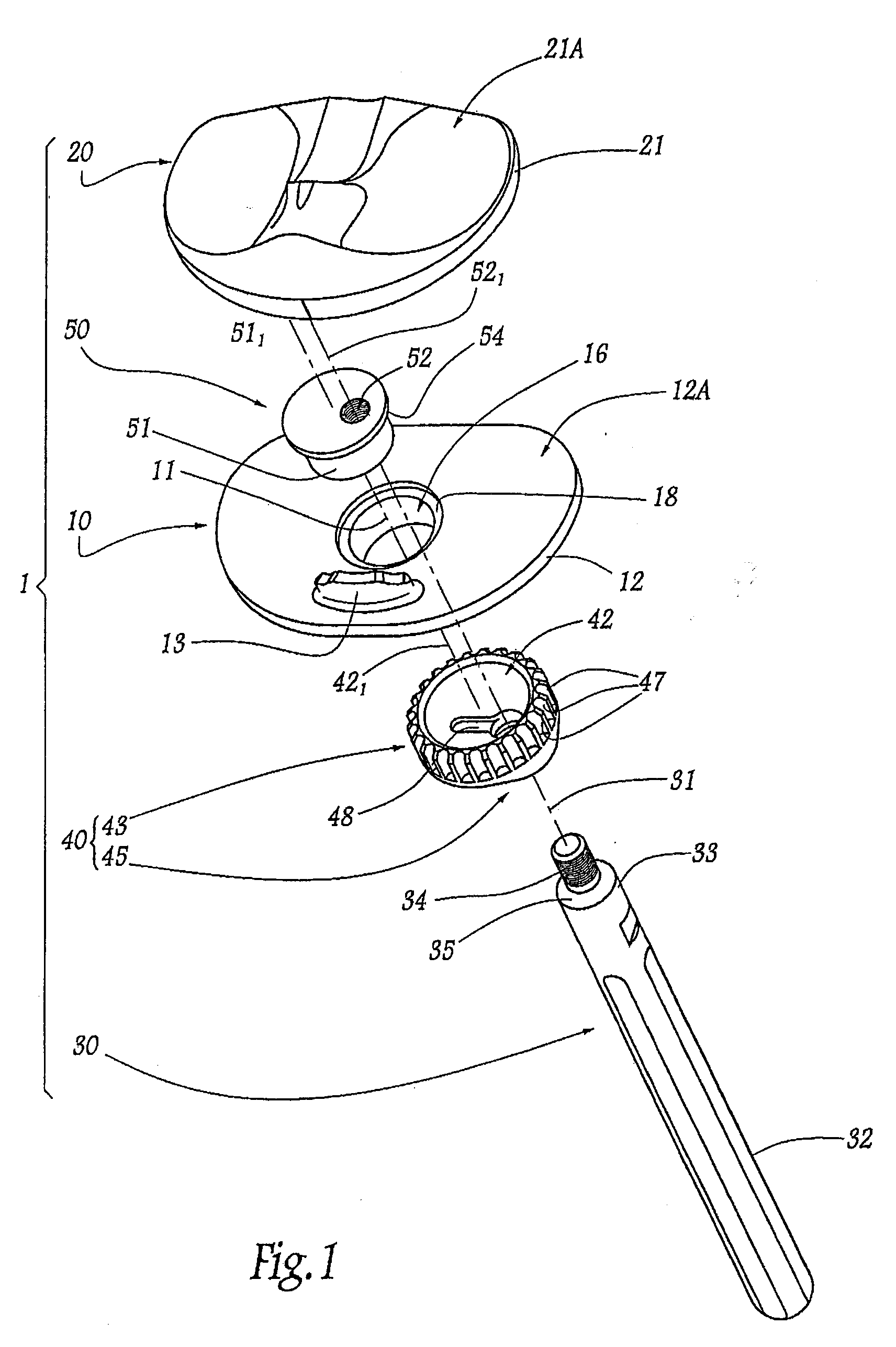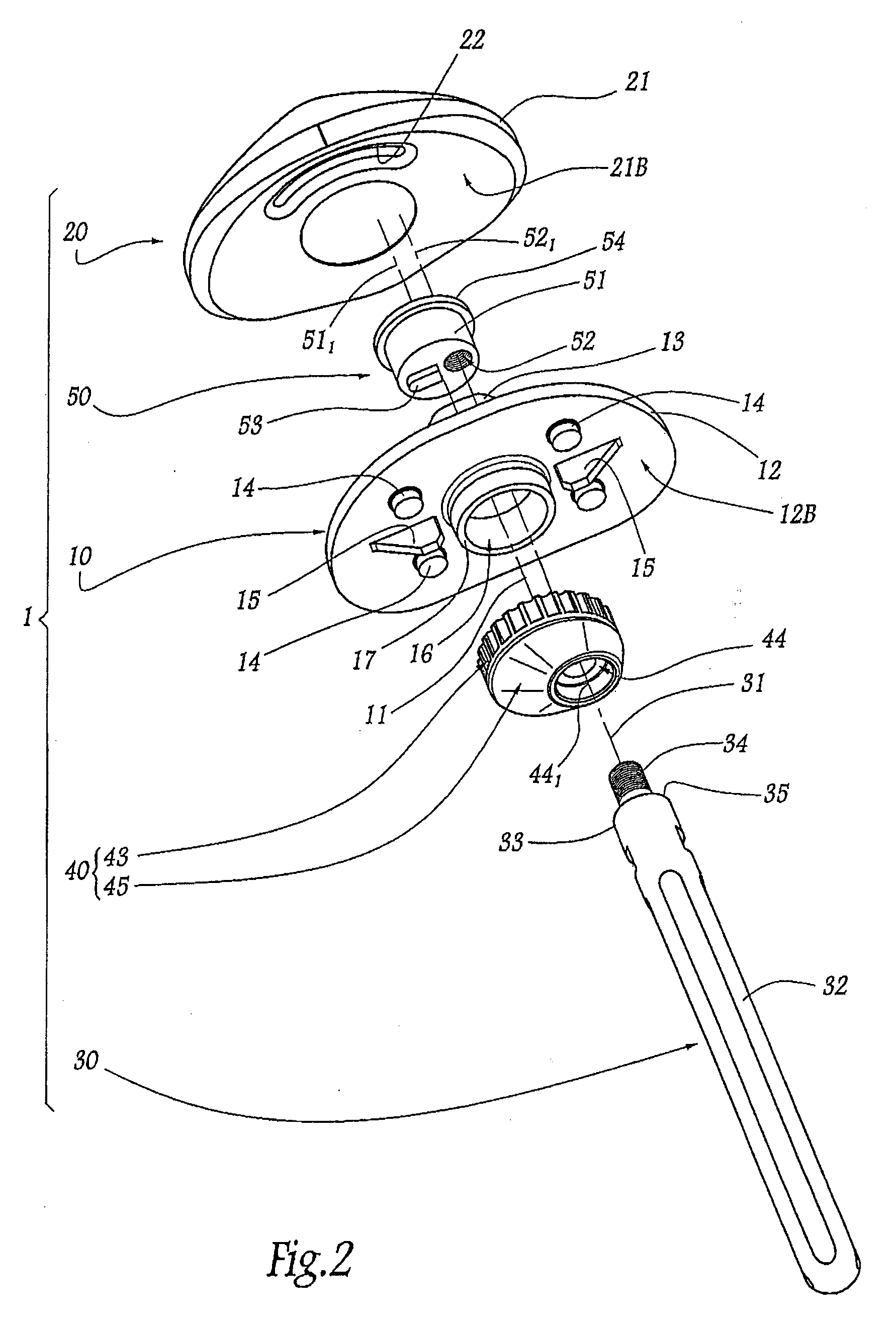Offset stem tibial implant
a tibial implant and stem technology, applied in the field of tibial implants with stems, can solve the problems of cost, logistics and efficiency, and the inability to adjust the relative positioning of the two tibial axes, and achieve the effect of facilitating the movement of the surgeon
- Summary
- Abstract
- Description
- Claims
- Application Information
AI Technical Summary
Benefits of technology
Problems solved by technology
Method used
Image
Examples
Embodiment Construction
[0039]In FIGS. 1 to 3, a tibial implant 1 is shown forming part of a knee prosthesis of a human being. For convenience, the remainder of the description is oriented relative to the knee of a patient who is standing, such that the term “proximal” denotes a direction directed towards the knee joint while the term “distal” denotes a direction in the opposing direction. Similarly, the terms “upper” and “top” and in contrast, “lower” and “bottom” are understood to be relative to a largely vertical direction in relation to the ground on which the patient is standing, with the tibia thus extending in a substantially vertical manner.
[0040]The illustrated embodiment of implant 1 includes five separate components, able to be assembled to one another so that the implant has an assembled configuration allowing its implantation in one piece in the region of the tibia. The illustrated components include a tray 10, a pad 20, a stem 30, an adapter element 40 and a locking element 50, each of which ...
PUM
 Login to View More
Login to View More Abstract
Description
Claims
Application Information
 Login to View More
Login to View More - R&D
- Intellectual Property
- Life Sciences
- Materials
- Tech Scout
- Unparalleled Data Quality
- Higher Quality Content
- 60% Fewer Hallucinations
Browse by: Latest US Patents, China's latest patents, Technical Efficacy Thesaurus, Application Domain, Technology Topic, Popular Technical Reports.
© 2025 PatSnap. All rights reserved.Legal|Privacy policy|Modern Slavery Act Transparency Statement|Sitemap|About US| Contact US: help@patsnap.com



